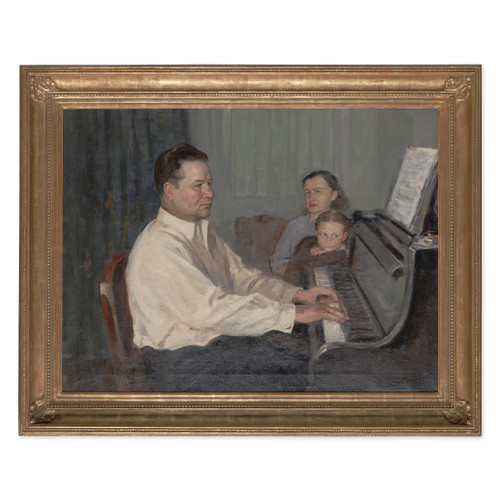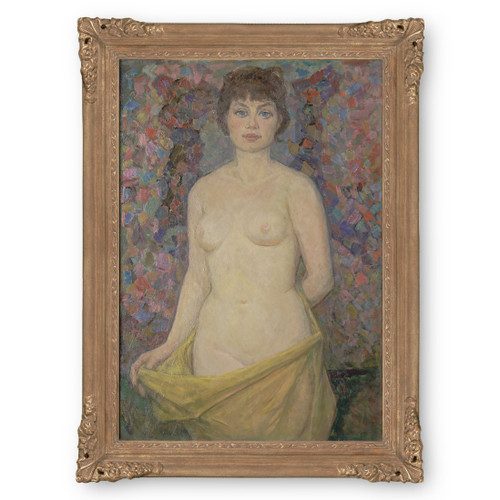-

-

-

-

-

Mr. Marin
"Standing Figure of a Young Man" Original Oil Painting by Gavriil Gorelov Circa 1940
$48,500.00 -

-

-

-

-

-

Russian Soviet Realism
The history of Russian Impressionist painting is the tale of an extraordinary movement in the art of the twentieth century. It entailed the sponsorship of realistic painting on a scale unmatched anywhere in the world, and engaged for decades, the talents of thousands of artists across a vast, multicultural empire. The concept of "Soviet Social Realism" (formulated in 1932) a.k.a. Russian impressionism ran counter to artistic development in the West in fundamental ways. It emphasized the social role of art; it insisted on the superiority of content over form and required a wholesale return to traditional skills, regarding history and European art from the Renaissance as a living source of inspiration.
In the ensuing years, artists struggled between their duty to reflect the ideals of the State, and their innate artistic necessity to develop their own stylistic repertoire. As a result, undeniably impressionist tendencies dominated the work as artists experimented with technique and self-expression. The work of the French Impressionists was considered to be bourgeois and a sign of Western decadence. Party leaders demanded that art should be "understood" by the average person. Somehow, Russian artists managed to perform a delicate balancing act between the requirements of "accepted" working class art by painting poetic (impressionistic) scenes in which the worker, farmer, or monumental Russian industry are the primary subjects.
With the death of Stalin in 1953 the darker academic pallet began to lighten and the need to conform to rigid subjects eased. We see during the prolific periods of the late 1950's and 1960's a movement toward a more relaxed, contemporary "modern" motif. This was the beginning of what is known as the "Severe Style" of Social Realism. The figurative subjects are more harshly defined, with cartoon-like, almost naïve forms and aggressive colorization. The Severe Style movement eventually gave way in the 1970's and beyond to a near free-for-all of styles. Soon, modernists, non-conformist and even Fauvist styles joined the once radical impressionists. The fall of the Soviet Empire took with it the last of the social realist art form. Emerging artists were uninspired by the former constraints and moved exclusively to the avant-garde. By 1990, all that was left of Russian Impressionism was a body of work created in the five previous decades by a few masters and their progeny.
If the French Impressionist pallet can be considered feminine, then the natural counter in verisimilitude is the masculine pallet of the Russian Impressionists: a legacy in oil paint of a vast country, landscape, its people and their history.
